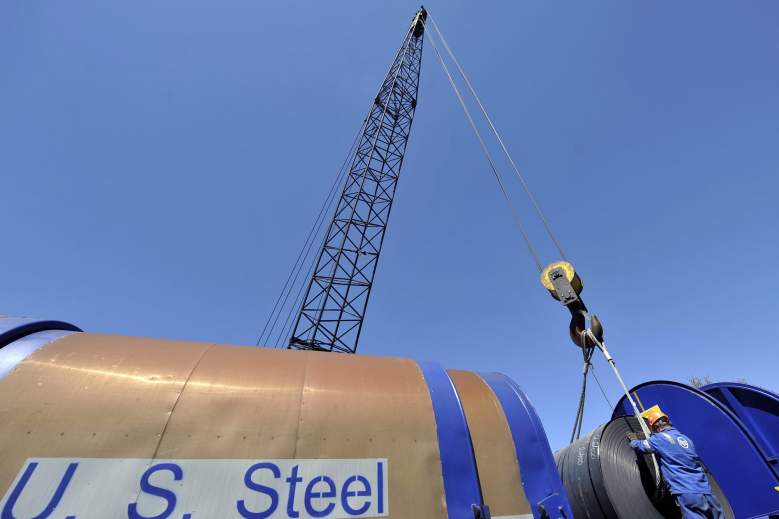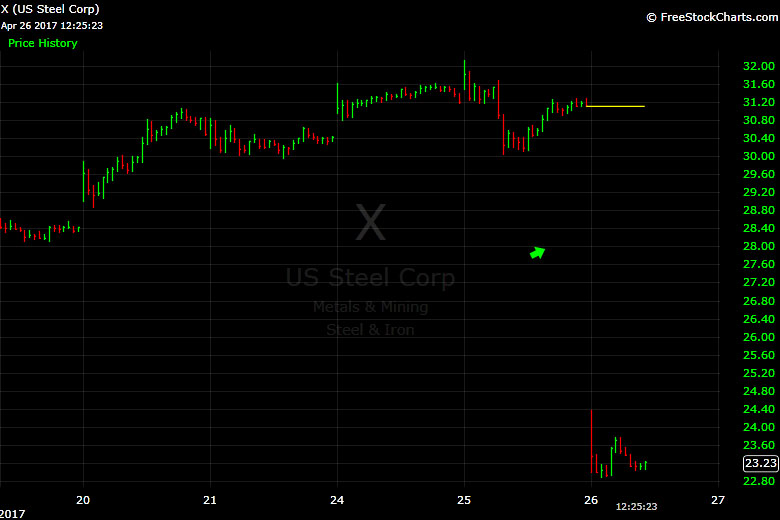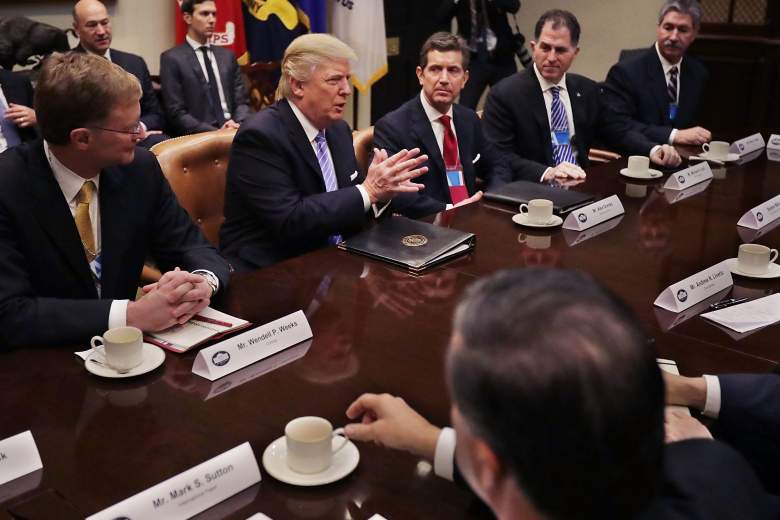
(Getty)
This is what it feels like when the rug is pulled out from under the feet of investors.
Shares of U.S. Steel plunged the most intraday since it went public again in 1991. The stock tumbled 25% in midday trading.
The stock had been riding a wave of enthusiasm since the election of President Donald Trump, who promised big government infrastructure spending. But first-quarter results brought shares and shareholders back down to earth.
A Big Loss Vs. an Expected Profit

Weekly chart of U.S. Steel (X). (FreeStockCharts.com)
U.S. Steel surprised Wall Street with its quarterly profit and its guidance on the bottom line for the year.
The company reported an adjusted quarterly loss of 83 cents per share. That’s miles away from earnings of 34 cents per share analysts on average were expecting, according to Briefing.comm
For 2017, U.S. Steel now expects earnings of $1.50 a share, a sharp haircut from the consensus estimate of $3.05 a shares. Full-year earnings before interested, taxes, depreciation and amortization (EBITDA) are now predicted to be $1.1 billion. In January the company predicted full-year EBITDA to come in at $1.3 billion.
“First quarter results for our Flat-Rolled segment declined significantly compared with the fourth quarter, as we expected, primarily due to higher raw material costs, increased planned outage costs, seasonally lower results from our mining operations, and restart costs associated with the Granite City hot strip mill and our Keetac iron ore mine,” U.S Steel CEO Mario Longhi said in a press release.
“These factors were only partially offset by higher average realized prices and benefits from slightly increased shipments that were limited by operating challenges at our facilities,” Longhi added.
That was certainly a shock to much of the sell side. In March, S.G. Cowen expressed confidence in the outlook for steel and steel prices, noting U.S. Steel as one of its favorite stocks in the sector.
A Trump Rally Hits a Speed Bump

(Getty)
U.S. Steel was one of several stocks that benefited from enthusiasm for President Trump’s touted plan for $1 trillion in infrastructure spending. But unlike the cut in corporate taxes the market is expecting and celebrating, details of infrastructure programs are sparse. The president decided to back off from demands for funding of a border wall in negotiations of a continuing resolution to keep the government open.
Regular upgrades came from research analysts in the first quarter. And the stock responded to tough talk from the administration on trade matters.
Even with today’s huge drop, the stock is up about 23% from Nov. 1. At the beginning of 2016 it was trading around $8.
But investors saw something interrupting the run. Since late February, when the stock peaked higher than $41, there’s has been a precipitous decline. A lack of action on trade when it comes to steel and seeming change of view by the president on how to deal with China left concerns about just how much government action could actually help steel makers.
Is the Stock Attractive Now?

(Getty)
Should investors take advantage of U.S. Steel’s tumble as a time to buy?
From a technical perspective it looks like there is support for the stock around $23. But from a fundamental perspective, it will depend on how much faith you have in what’s been an unpredictable White House.
Based on its full-year earnings guidance, U.S. Steel certainly doesn’t see huge infrastructure spending in 2017.
The administration has launched a national security probe into whether steel imports posed a threat, which could lead to tariffs on global steel. But that is just at a “research stage,” according to Commerce Secretary Wilbur Ross.
So, now looks a bit too soon to jump into a U.S. Steel long, especially as the broader market is looking to this stumble as more company-specific. Competitors like Nucor (NUE), ArcelorMittal (MT) and Steel Dyanmics (STLD) all were little changed in midday trading.